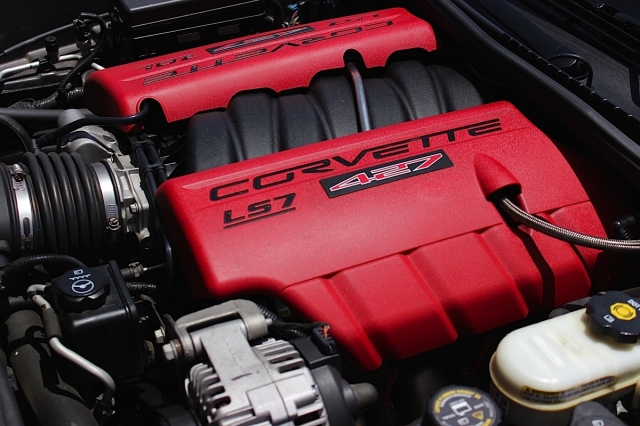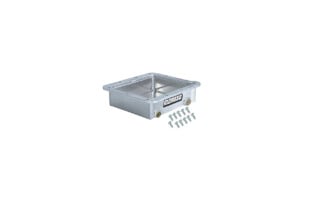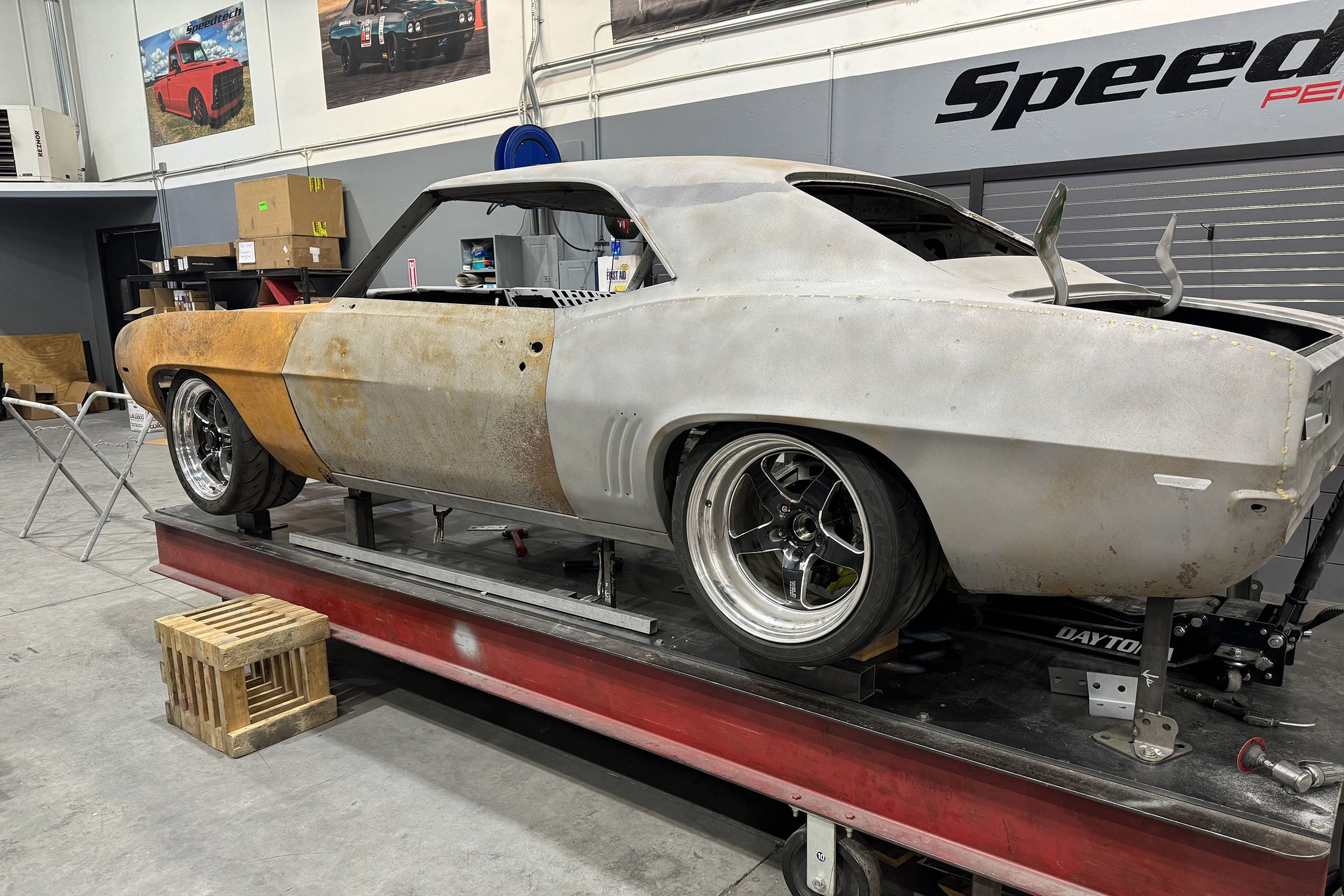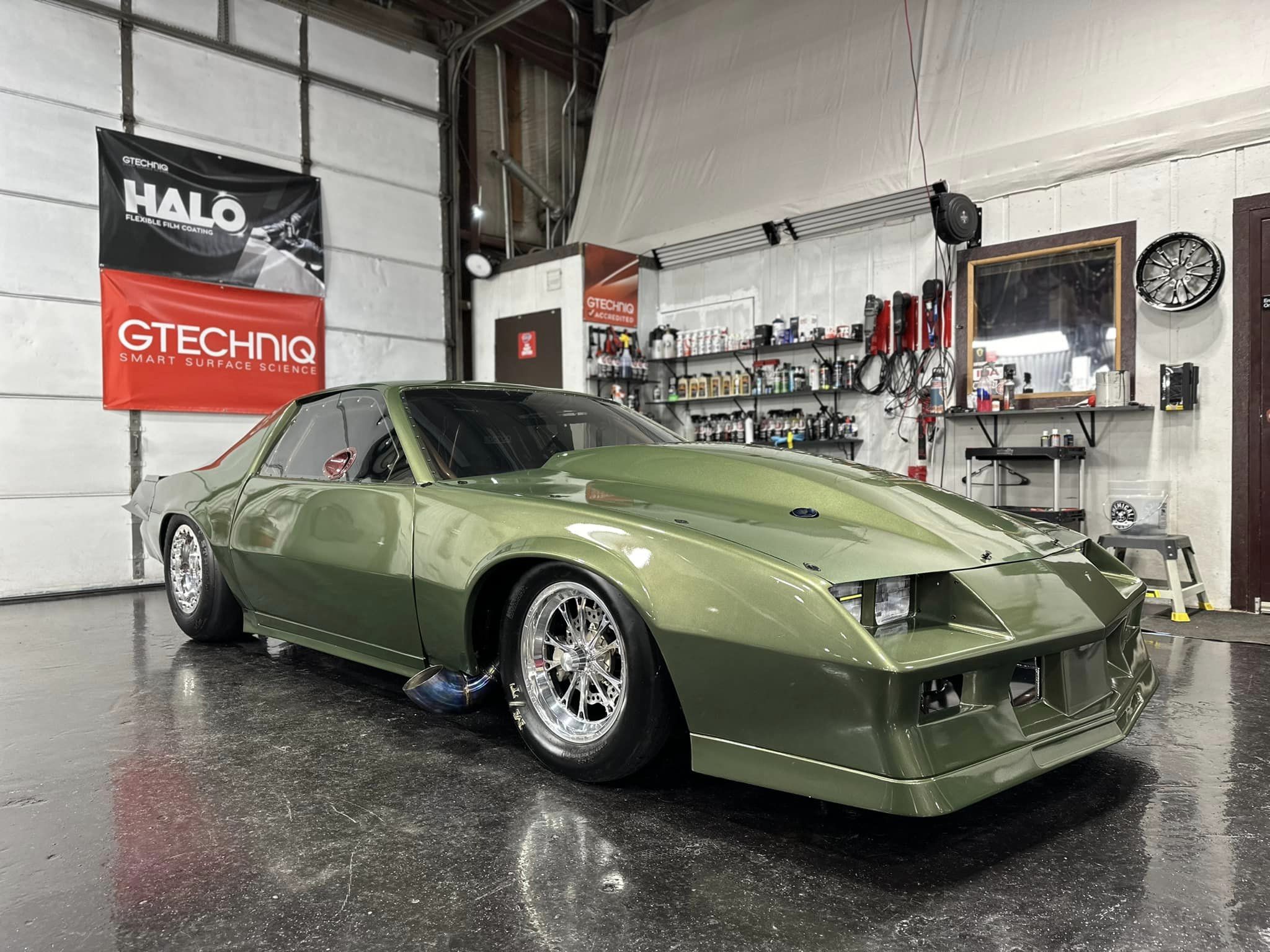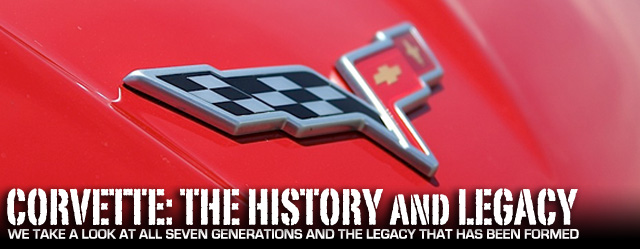 For over 50 years and seven generations later, the Corvette has been a staple of GM‘s product offering that has ignited the passion of enthusiasts world wide. The road from a newly introduced product in 1953 to the modern-day American icon has not been an easy one and in this feature, we will take a look at the history of the Corvette, some of the challenges it has faced, and why it has built a legacy that stands alone.
For over 50 years and seven generations later, the Corvette has been a staple of GM‘s product offering that has ignited the passion of enthusiasts world wide. The road from a newly introduced product in 1953 to the modern-day American icon has not been an easy one and in this feature, we will take a look at the history of the Corvette, some of the challenges it has faced, and why it has built a legacy that stands alone.
A Brief History
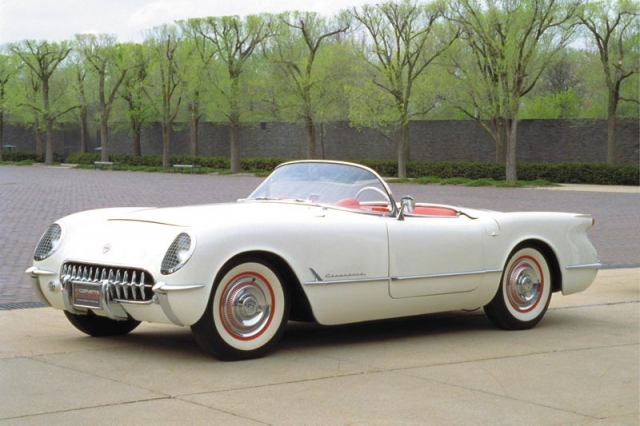
The 1953 Corvette that started it all. WebCars
Originally introduced late in the 1953 model year, the C1 Corvette, named after a small and maneuverable warship called the “corvette,” was equipped with a 150 hp inline six cylinder, solid rear axle, and a 102-inch wheelbase. The original Corvette was created for the 1953 New York Auto Show and after it generated enough interest, went into a 300 unit production cycle in 1953.
In order to keep costs low and at the recommendation of Zora Arkus-Duntov, GM used fiberglass as opposed to steel and used the same motor they had from their other models in the Corvette with only minor changes to increase compression (Zora later suggested a V8). Since GM did not have a manual transmission capable of handling 150 hp, a two speed Powerglide automatic transmission was used that helped the vehicle run zero-60 times in 11.5 seconds.
For 1954, GM decided to bump up production from 300 units to 3,640, but unfortunately, units were both built and sold very slowly. The sales were so slow in 1954 that despite adding a V8 option, production decreased to 700 units in 1955 because there were so many unsold 1954 models still available. From 1955 to 1960, the Corvette received numerous updates including updated styling, less chrome, new engine packages, a manual transmission, and the signature set of four round brake lights. The 1961-1962 years were the pinnacle of power for the C1 offering 360 hp and were also the last years of solid axle equipped Vettes.
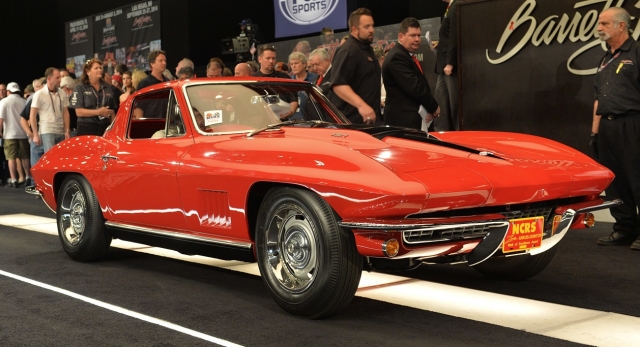
An extremely rare 1967 Corvette L88 “C2” sold at auction for $3.85 million in early 2014. Autoblog
The C2 Corvette ran from 1963-1967 and to this day is the most sought after generation of Corvette’s with the introduction of the “Stingray” name and styling. This generation continued with the fiberglass bodywork that has become a staple of the Corvette heritage, introduced independent rear suspension, and was the generation where the Corvette began to make big power numbers with the L88 430 hp V8. During this generation, GM also introduced the Grand Sport name that was a lightweight version designed to take on the Shelby Cobra. Having originally planned to manufacture 100 units of the Grand Sport, GM only produced five and they are some of the most valuable Corvettes to collectors to this day.
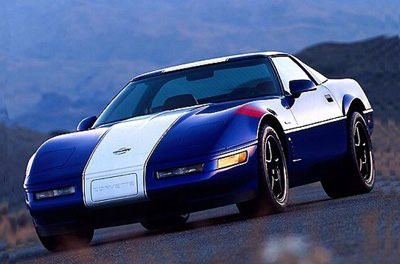
The 1996 C4 Grand Sport had a distinctive look and was the last of the C4 generation. Corvette Forum
The C3 generation that ran from 1968 to 1982 saw new styling, a transition from chrome bumpers to impact absorbent bumpers, and fluctuations in the power plant department. Due to regulations affecting fuel and pollution, the Corvette went through changes that included significant reductions in horsepower. This reduction of power continued into the all-new C4 generation (1984-1996) that was introduced with the L83 210 hp V8. After a 12 year production cycle that introduced the ZR-1 name, a twin-turbo B2K option in 1987, and fluctuating horsepower numbers, the C4 Corvette ended with the 1996 Grand Sport featuring the 330 hp LT4 V8.
With improved technology and strong criticism when comparing the C4 to Japanese rivals, GM introduced the C5 Corvette in 1997 that was greeted with open arms and acclaim from the press and the public alike. The C5 was introduced with all new low drag styling, an all-aluminum 345 hp small block, and the still used front engine, rear transmission design. The LS family of small-blocks was also introduced with the C5. It offered great reliability, performance, and up to 28 mpg allowing the Corvette to get past the gas guzzler tax. In 2001, GM introduced the C5 Z06 featuring the LS6 V8. Despite having power numbers equal to the C4 ZR-1, the C5 Z06 was an overall quicker vehicle with much improved handling and braking capabilities.
Expanding off of the C5, the all-new sixth generation C6 was introduced in 2005 with modern styling, exposed headlamps, and a top speed of 190 mph. Throughout the C6’s lifespan of 2005-2013, GM brought back the Z06, ZR-1, and Grand Sport moniquers offering a deeper product offering with more mass appeal. The LS9 equipped ZR-1 was announced in December of 2007 and was the most powerful power plant GM had ever offered in a production vehicle with a 6.2 liter, 638 hp, V8 and a top speed of 205 mph.
At this point in the Corvette’s history, the Corvette (especially Z06 and ZR-1 models) earned the reputation of having near super car level performance for a fraction of the price. With the increased usage of social media and other forms of communication like YouTube, media could be seen by everyone pitting the Z06 up against some of the worlds fastest cars.
The C6 was not loved by all though as there were complaints that it felt less refined than some of its competition (Porsche 911) and was a bit too “heavy” feeling in the handling department despite its slender waistline. For 2014, GM decided to serve notice to the rest of the performance world and introduced the seventh generation C7 Corvette equipped with an entirely new chassis, improved handling, a new lineage of direct-injection small-block V8s (LT4), and a wealth of technology features found only in the upper echelon of performance cars.
The Legacy
What started with humble beginnings being built out of off the shelf parts has turned into the modern-day C7 that is capable of taking on some of the most sought after cars in the world. This transition has not been an easy one. The Corvette has faced less than stellar sales figures at times, persevered through numerous economic downturns, taken on changes in the automotive industry head on, and has had stiff competition both domestically and internationally.
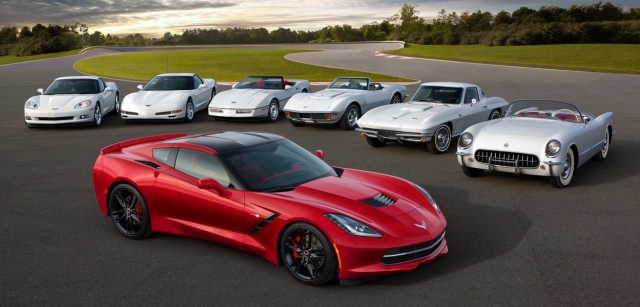
Chevy’s C7 ad campaign showing the seven generations of the Corvette. Falls City Corvette Club
In my opinion, the Corvette is undoubtedly an American icon because of the passion it provokes from enthusiasts. They say that nothing sounds like a Corvette, and I would have to fully agree with that statement. While Ferraris, Porsches, Vipers, and even Mustangs each resonate their own distinctive tone, it’s this writers opinion that no production vehicle has anything on the raw growl that comes out of the back end of a Vette – it simply screams “America!”
The design of the Corvette is also something that is sure to bring out emotions from owners and onlookers alike. Love it or hate it, the Corvette has always had a distinctive look that sets it apart from the competition. GM’s design team has worked tirelessly over the years to create a form that is both functional and in my opinion, ahead of its time. The C2 Stingray that first stepped into Chevy showrooms in 1963 was so far ahead of its time that nothing could touch it. That design has been so sought after that original C2s have sold for obnoxiously large sums of money over the past decade. They’ve also been used heavily to design the current C7.
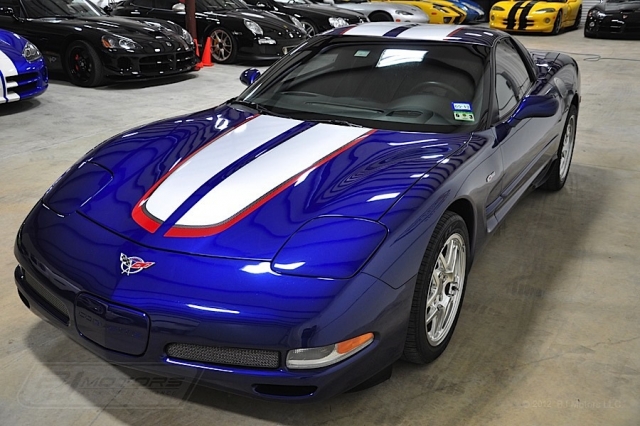
2004 (C5) Commemorative Edition Corvette BJ Motors
GM’s design for the Corvette has not only been focused on visual stimuli. Unlike many of its competitors, the Corvette has been designed as a car that can be daily driven to work and then used at the track on the weekend. GM has made huge power numbers over the years, but they have not turned a blind eye to reliability and function. With enough storage for a briefcase in the back and enough ground clearance to tackle most American roads, GM has done a fantastic job of keeping this race-bred vehicle as something that can be enjoyed daily by its owners.
The Competition
While some competitors like the Mustang and Porsche 911 can be daily driven, I just don’t see them being in the same segment as the Corvette. In my opinion, the Mustang is not a direct competitor to the Vette because it has always been designed as more of a “practical” performance car.
It has a higher roofline, a solid rear axle (less performance focused), seats five, and has been marketed as the performance car that you can load up the family in and go on a trip in. The Mustang is definitely daily driver worthy, but it doesn’t carry anything close to the Corvette mystique.
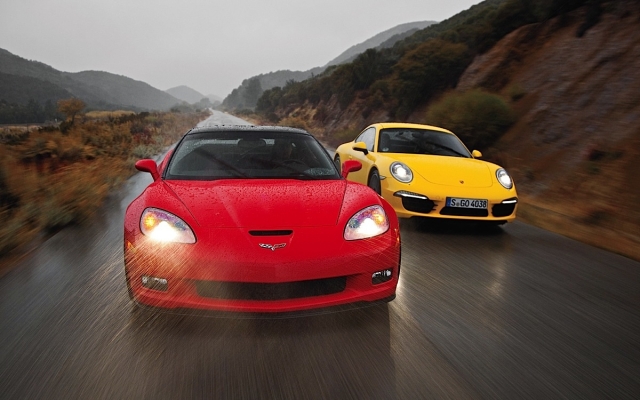
Motor Trend’s C6 vs. 911 face off. Motor Trend
The Porsche 911 is daily driven by doctors and lawyers all across America– it is refined and it is the Rolex of daily drivers. The problem is, it doesn’t have the Chevy small-block reliability, is very expensive, and has handling characteristics that can bite you if you’re not careful. Owning a Porsche just caries a certain image with it and I’m not too sure if I would want that image.
The 911 and Mustang are just a couple examples of vehicles that might be considered “competitors” to the Corvette but they just aren’t direct competitors. Sure, to some people a Corvette comes with a gold chain, Tommy Bahama shirt, and grey hair, but for the diehard enthusiasts, nothing can compete. What other car on the road can you use everyday, run at the track on the weekends, take on a road trip with one special passenger, get 30 mpg, and use to take down some of the worlds fastest performance cars – all for a fraction of the price? The answer is none.
There is no other car that can do everything the Corvette does without compromising on one or more of the key aspects that the Corvette does well. While the Corvette may not be the end-all, be-all for everyone, it stands in a class of its own offering the perfect combination of performance, drivability, reliability, and pricing and will continue to serve as a symbol of American performance.



